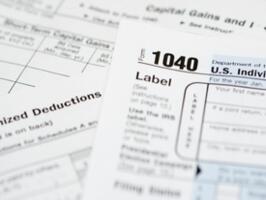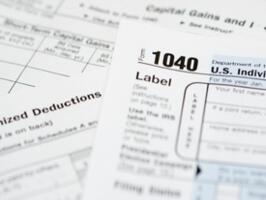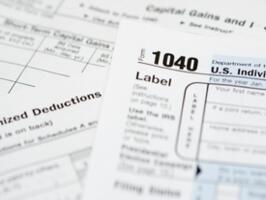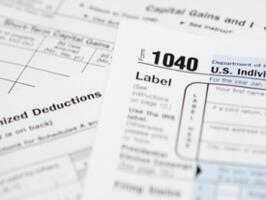For Voters, Tax Reform Means Tax Equality
A Commentary By Scott Rasmussen
There's a reason President Obama, Mitt Romney, Paul Ryan and many others are touting tax reform these days. On the campaign trail, it taps into deeply held beliefs about the way American society ought to work and the role of government.
Seventy-seven percent think it's important to replace the entire federal tax code with something simpler. Seventy-one percent favor a tax code with lower tax rates and very few deductions.
The desire for fewer deductions stems from a couple of sources. One is an underlying belief that those wealthy enough to hire the best lawyers and accountants can find more loopholes than ordinary taxpayers. The other is a reluctance to have government picking winners and losers with special tax breaks. Half of all voters believe that a tax code with no deductions and lower rates would help the economy. Just 13 percent believe it would hurt.
But the reality of designing a reform plan that matches up with those beliefs is far more challenging. The central challenge can be seen in the results of two recent polls by Rasmussen Reports. The first found that 58 percent of voters nationwide think everyone should pay the same share of their income in taxes. So if someone earns twice as much as another person, they should pay twice as much in taxes. Flat-tax advocates seize on such data as proof that voters support their dreams, but that's not really the case.
The second piece of data shows that 66 percent believe the middle class pays a higher share of their income in taxes than the wealthy do. This means that part of the desire for everyone to pay the same share of their income in taxes comes from a desire to have upper-income Americans pay as much as the middle class does.
Whenever I mention that perception to tax reformers, they get frustrated and cite data showing that upper-income Americans pay more, not less, of their income in taxes. That's where implementation of a truly flat tax becomes a policy nightmare. A flat tax would increase the taxes paid by the middle class and cut taxes paid by upper-income Americans. In other words, it would achieve exactly the opposite result of what most Americans are looking to accomplish.
Still, it's possible to talk about fundamental reform and retain some graduated rate structure. Most voters (54 percent) favor a proposal that would eliminate all deductions and include three tax rates: 5 percent on the first $50,000 of taxable income, 10 percent on income between $50,000 and $100,000, and 20 percent on income earned above the $100,000 mark. Only 25 percent of voters are opposed.
One of the reasons such a conceptual plan draws support is that it's grounded in a reality that some reformers occasionally forget. Americans pay taxes on lots of things besides their income. Some taxes (sales taxes and payroll taxes) do take a higher share of income from lower and middle-income Americans. So a graduated income tax to balance that out seems fair to most voters, not to soak the rich but to make sure that all Americans are treated equally.
COPYRIGHT 2012 SCOTT RASMUSSEN
DISTRIBUTED BY CREATORS.COM
See Other Political Commentaries.
See Other Commentaries by Scott Rasmussen
Rasmussen Reports is a media company specializing in the collection, publication and distribution of public opinion information.
We conduct public opinion polls on a variety of topics to inform our audience on events in the news and other topics of interest. To ensure editorial control and independence, we pay for the polls ourselves and generate revenue through the sale of subscriptions, sponsorships, and advertising. Nightly polling on politics, business and lifestyle topics provides the content to update the Rasmussen Reports web site many times each day. If it's in the news, it's in our polls. Additionally, the data drives a daily update newsletter and various media outlets across the country.
Some information, including the Rasmussen Reports daily Presidential Tracking Poll and commentaries are available for free to the general public. Subscriptions are available for $4.95 a month or 34.95 a year that provide subscribers with exclusive access to more than 20 stories per week on upcoming elections, consumer confidence, and issues that affect us all. For those who are really into the numbers, Platinum Members can review demographic crosstabs and a full history of our data.
To learn more about our methodology, click here.





